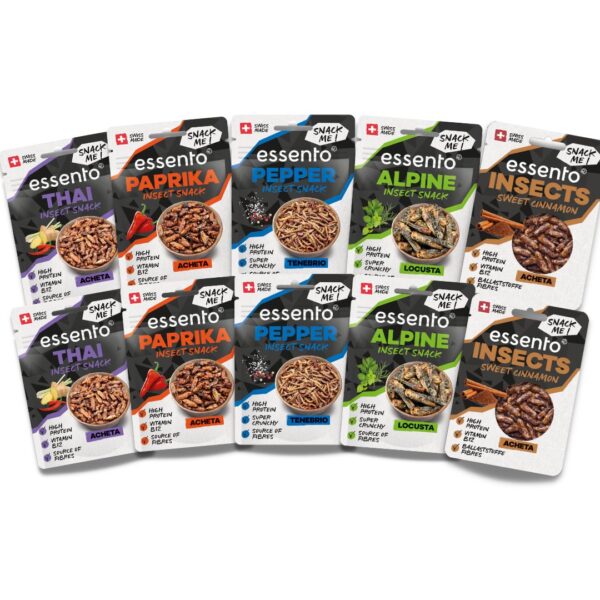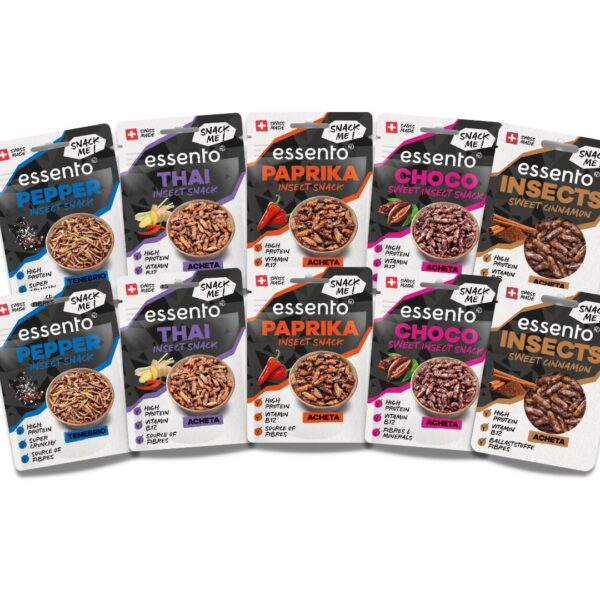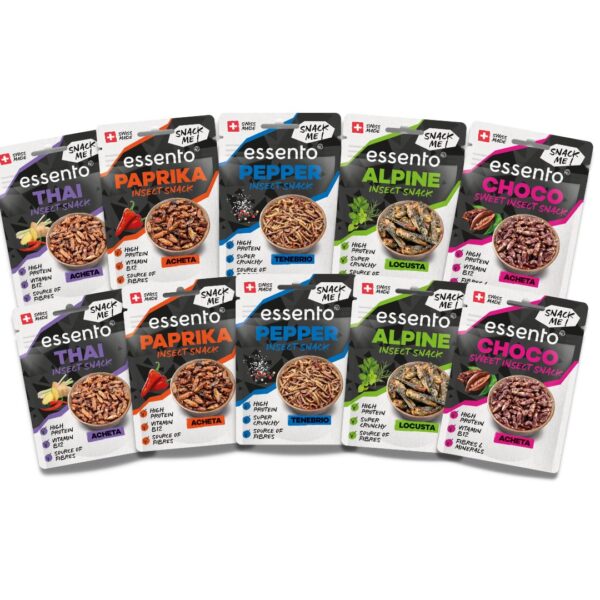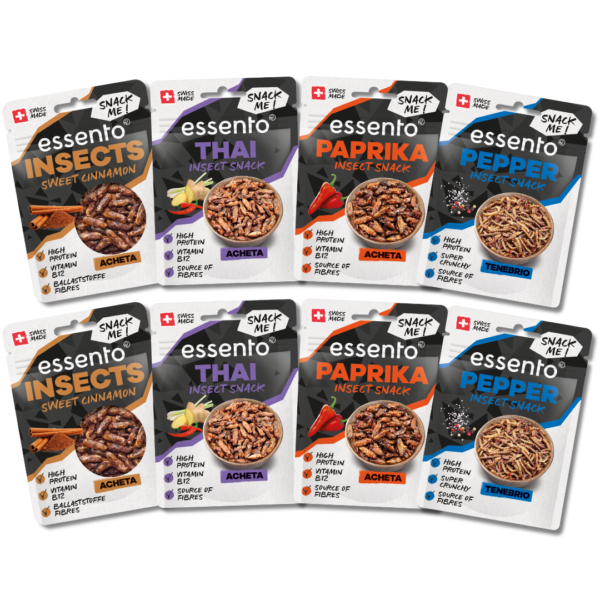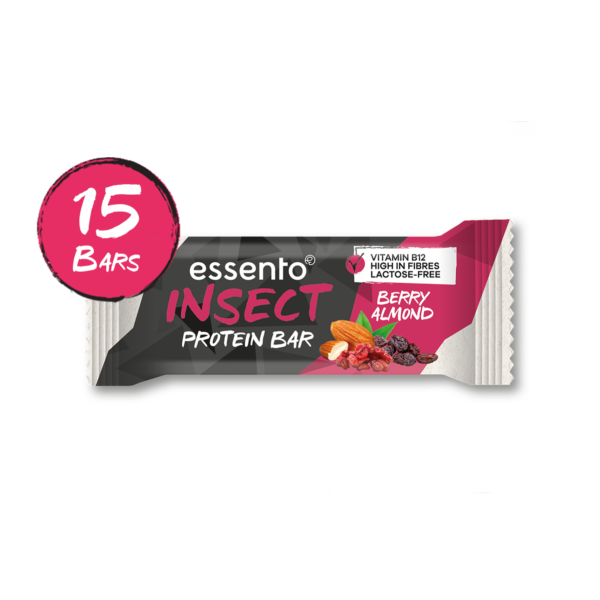We put our insects in the fight against beef and compare the different nutritional values, infrastructures required for breeding and so on. 2 billion people now eat insects every day. Insect food may seem daunting to some at first, but I promise you, you won’t want to cut it out of your diet.
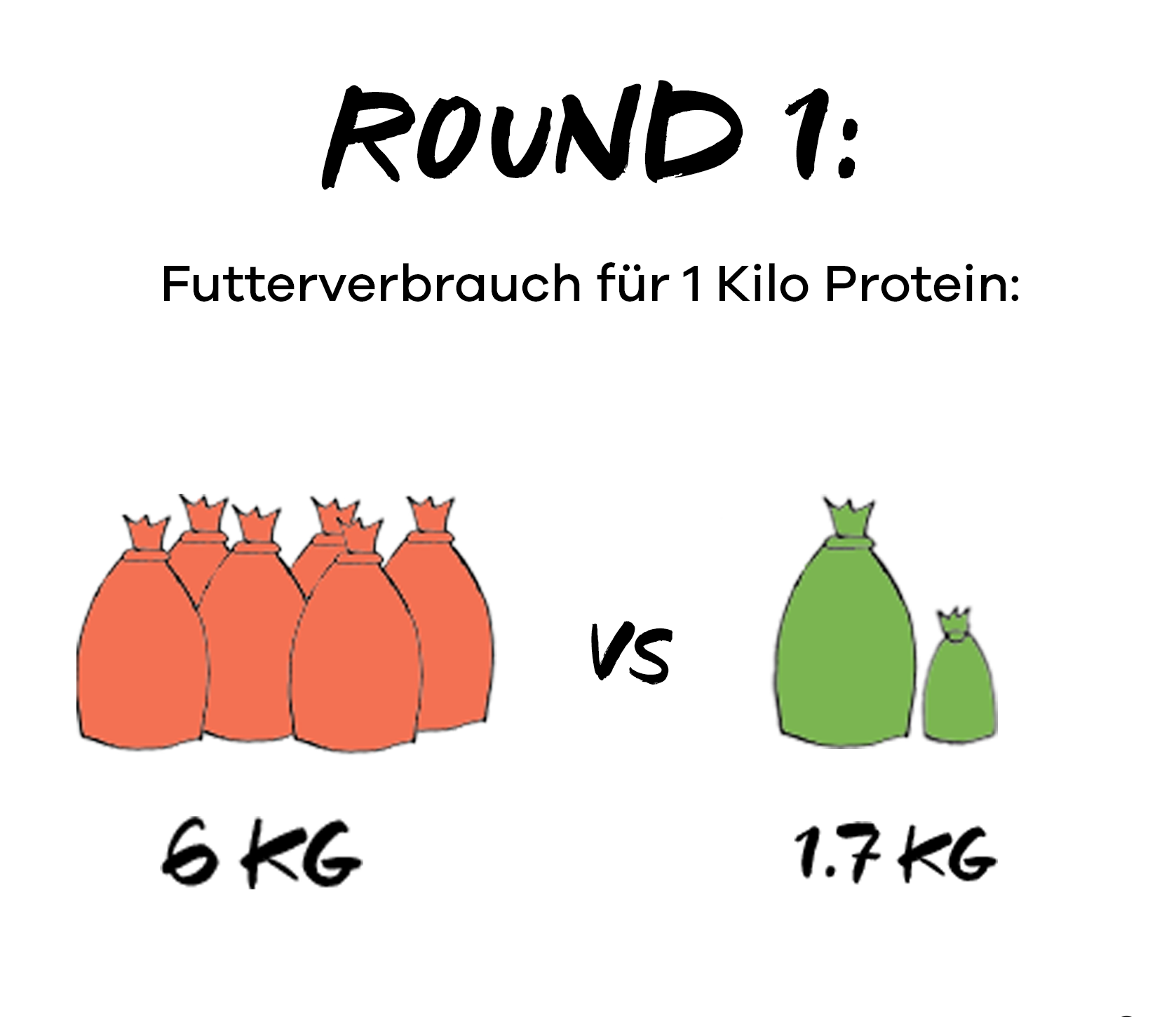
In the first round, we face the battle of food consumption.
Insects require much less feed than cattle. If we look at the feed requirement for 1 kilogram of protein to be produced, insects only need about 1.7kg. Beef, on the other hand, requires 6kg of feed for 1kg of meat.
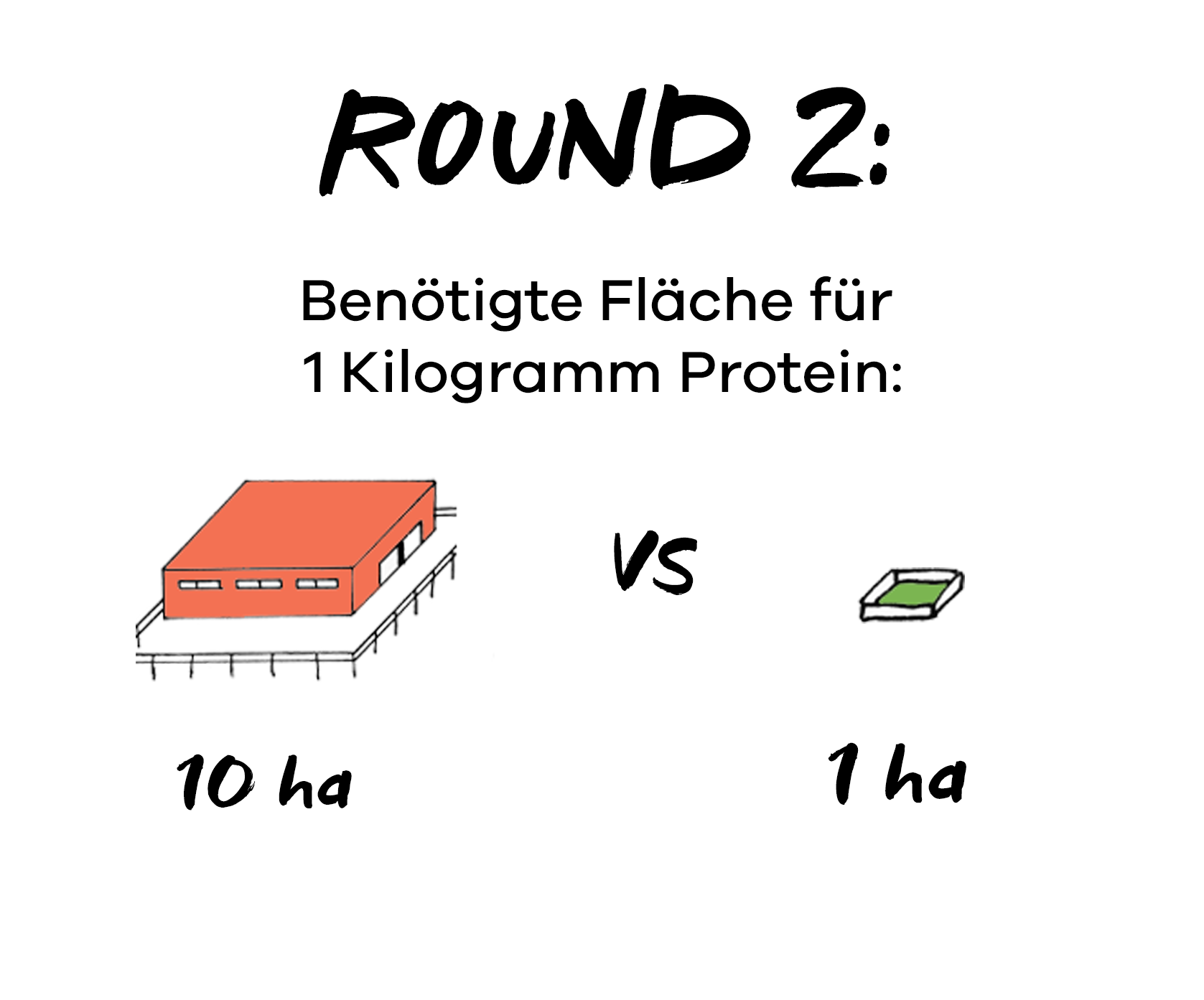
In the first round, we face the battle of food consumption.
After the first round has clearly gone to our insects, we enter the next round.
Let’s take a look at the animals’ accommodation.
For a kilogram of fresh meat, insects need just 1 hectare, beef needs 10 times that space.
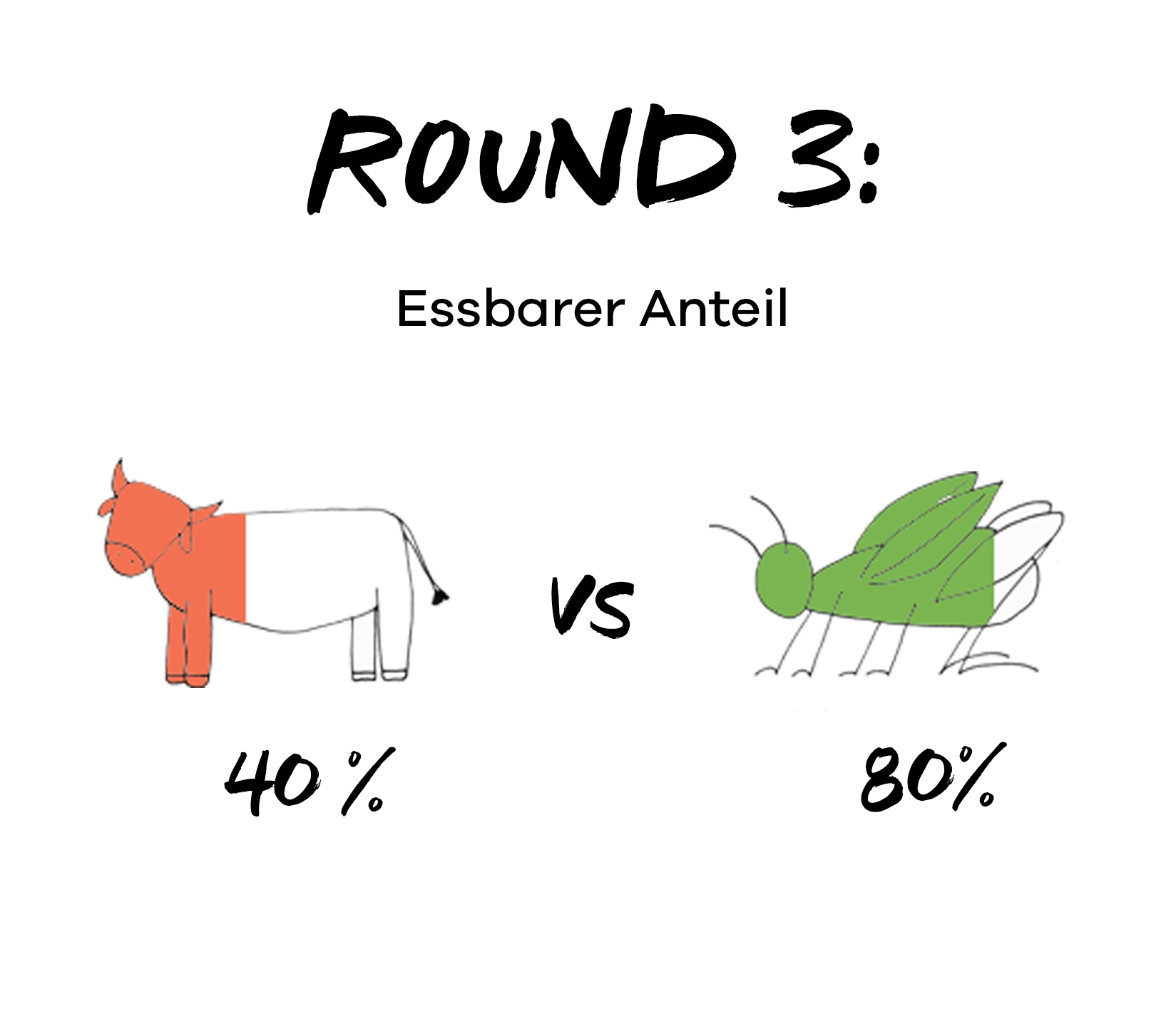
We also won the second round.
In the third round we look at the edible part of the animals. Here, too, we compare insects with beef.
In this list, the individual insect species differ from each other.
Mealworms have an edible portion of 100%. Crickets are also at 100%. Only in the case of grasshoppers is it advisable to remove the legs, as these sometimes have barbs. Some people like the wings of grasshoppers less, as they can be dry. Depending on your taste, you can simply remove them.
Already convinced?
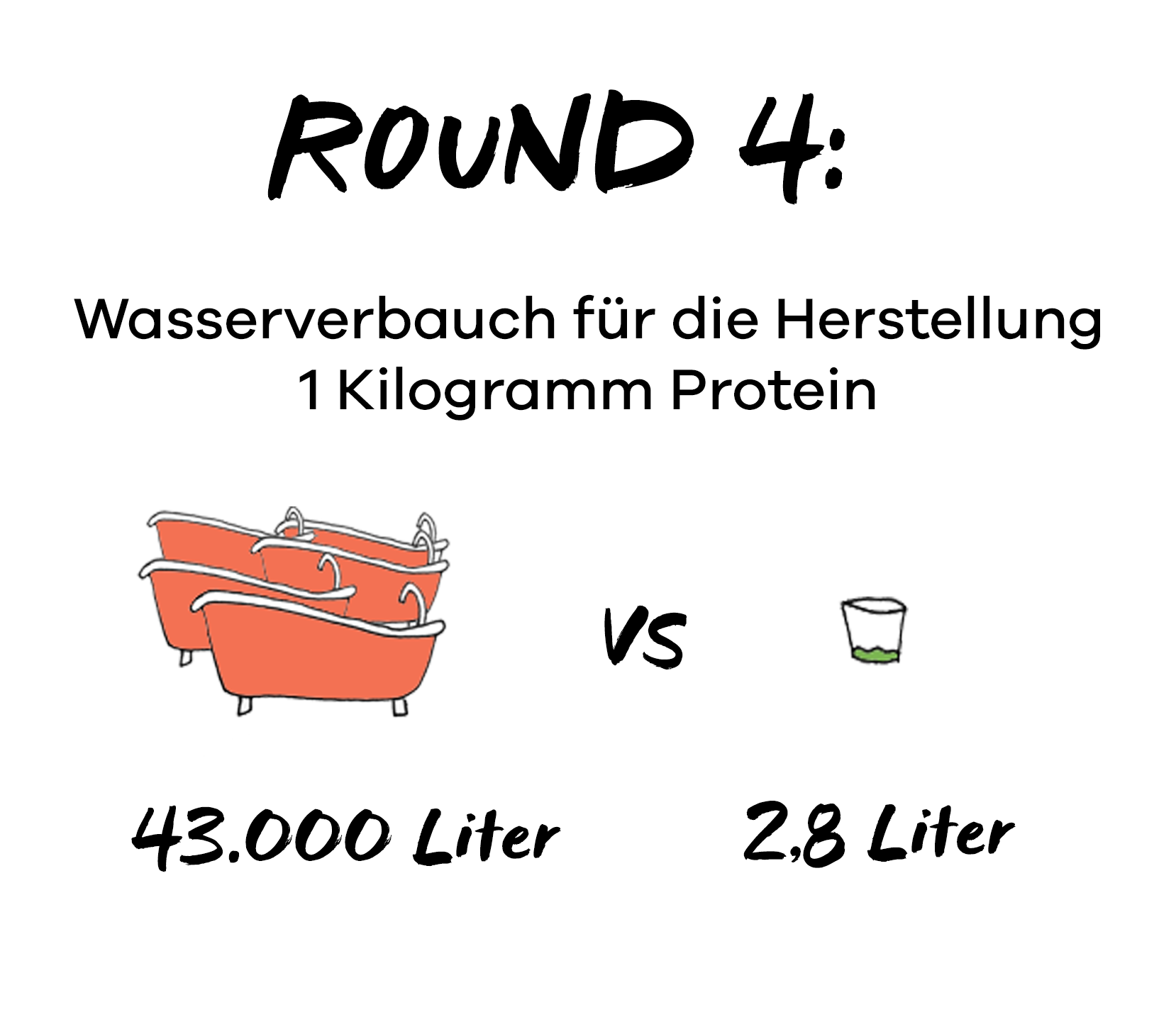
In the fourth round we bring you a real cracker!
For 1 kilogramme of meat, cattle need around 43,000 litres of water, insects only 2.8 litres.
Around 70% of the world’s water resources are used for traditional meat production.
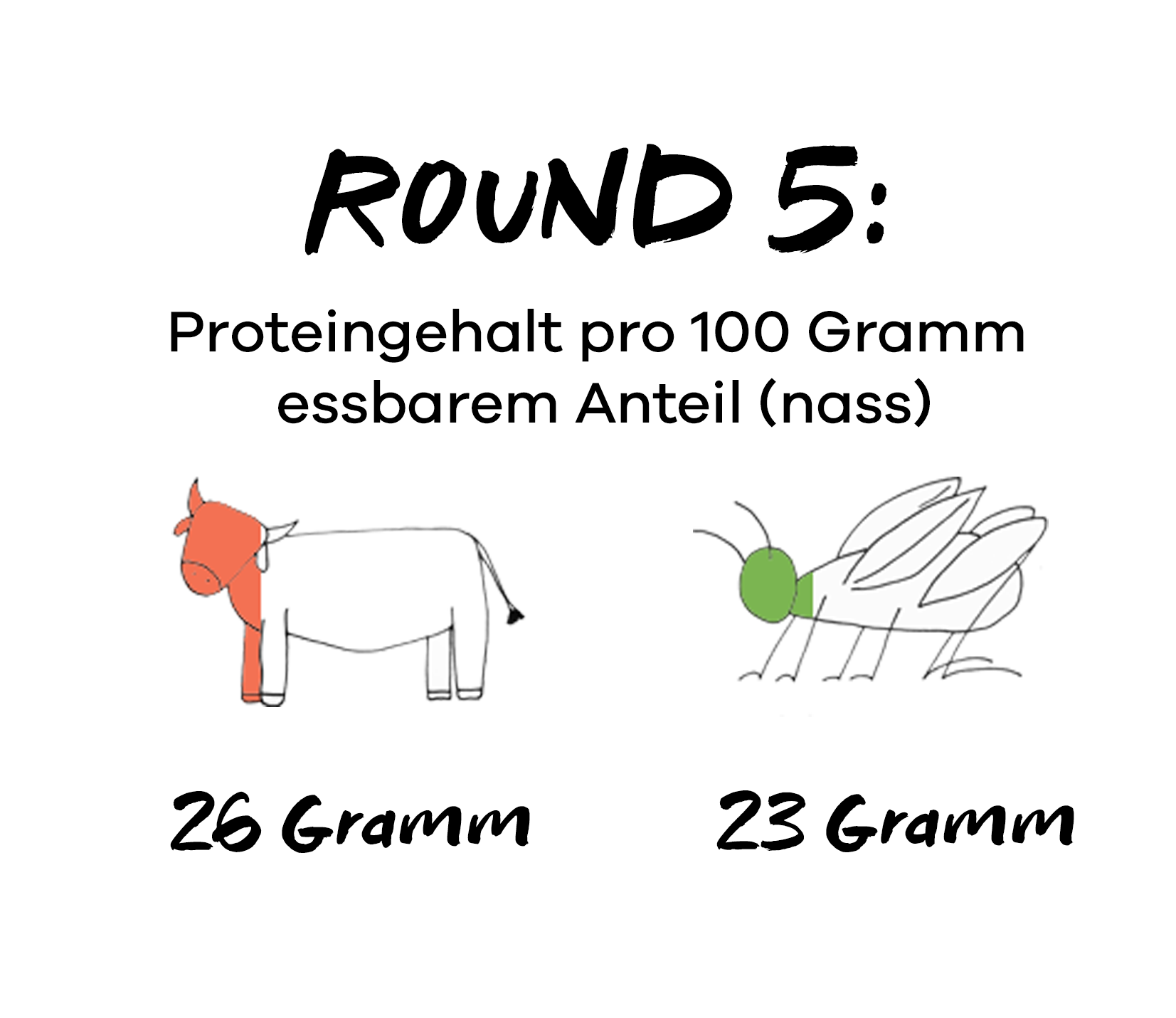
The last round is coming up.
We compare the protein content of beef and insects (here grasshoppers).
With a slight lead, beef has about 3g more protein per 100g edible portion when wet. So the last round goes to beef.
The insects win this battle 4:1. What else do you think speaks for the consumption of insects?
Would you like to try insects at home? Then order our insects online

